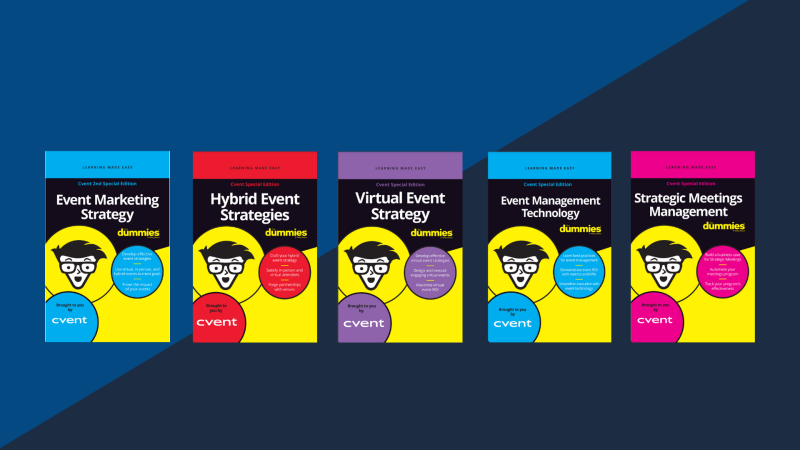It's no surprise that the global pandemic has significantly impacted event trends. The most important and anticipated events were cancelled, postponed, or changed into a wholly virtual experience during the pandemic.
Our return to normalcy is still a work in progress, but we now know more than before. With this knowledge, we went into the year prepared for the event trends for 2022, focusing on utilising technology to its greatest potential and all of our creativity to engage our audiences.
From the potential of hybrid events to the importance of data analysis, technology advancements, and personal, out-of-this-world experiences, we've got you covered.
Event Trend 1: Using a Hybrid Event Approach to Combine Virtual and In-Person Experiences
Companies confronted a significant question in 2021 as we bobbed in and out of our "new normal": are in-person events no longer an option? While many people choose to cancel their events or shift them online, others go ahead and schedule hybrid events.
Creating smaller in-person events with a virtual component using social distancing standards is possible. As a result, this year, hybrid event is gaining in popularity.
Whether or not there is a pandemic, hybrid events provide guests with flexibility and convenience. Clients, customers, and employees who have never been able to attend major meetings owing to location, expense, or time constraints can drop in and out of sessions as needed. Companies may use their imagination to develop novel ways to convey information while saving money and resources. The customer behavior insights that digital analytics can provide.
Event Trend 2: Improving Technology to Make Attendee Experiences More Pleasant
With more virtual experiences, there will be more disruptions and audience frustration and fatigue. However, event technology continues to advance, and there are now more options than ever before.
Use the appropriate tools and technologies for the size and scope of your event. Don't push your technology too far: Test everything and get second opinions from professionals to make sure you're not pushing the software too far.
Make sure the suppliers you choose can handle the audience size and sorts of material you want to provide by updating software as needed. Streaming video and interacting with interactive tools should be seamless. If you want to improve your creativity, you also need to improve your technology stack. And, once again, test.
Event Trend 3: Increasing Networking and Audience Engagement Opportunities
In many respects, hybrid events, especially when combined with the right event technology, generate several layers of possible participation. Many virtual event platforms allow you to mix live and on-demand video with social media-type elements on their home feeds and add interactive features like word clouds and Q&As.
You may keep guests engaged by using tools as activity feeds. With breakout rooms, you may switch between group chats and video conversations, allowing for post-event networking and product demonstrations with exhibitors. Each attendee or partner can create their profile, making it simple for other event participants to locate and engage with them.
The boundary between in-person and virtual experiences is blurred with a robust marketing events management solution.
Event Trend 4: Focus on health and safety
COVID-19 will, as previously said, continue to be a major concern for organizers shortly. As a result, health and safety will undoubtedly take precedence at hybrid events.
Socially separated sitting, mask-wearing, ventilation, onsite testing, immunization certificates, and negative COVID-19 test results are all examples of health and safety measures.
On the other hand, health and safety measures should be implemented and adequately communicated. Indeed, event planners should make these precautions and health and safety regulations explicit, addressing them regularly before and during the event. People in the audience will feel more at ease participating in person and mingling with other attendees.
Marriott International, for example, established a plan based on the "5Ws of Well-Being Behavior" for the PCMA Convening Leaders 2021 event, stating the following protocols:
- Cover up your nose, mouth, and chin with a mask.
- Use 20 seconds to wash your hands.
- Maintain 6 feet a safe distance
- Confirm that no COVID-19 symptoms were there for the last 14 days.
Event Trend 5: Sustainability is here to stay:
In recent years, sustainable event planning has gained a lot of traction. Most participants, particularly millennials, have been more supportive of green events. Event planners do everything to make their gatherings environmentally friendly, from recyclable cutlery to eco-friendly gifts and sustainable event venues.
We predict that the frontiers of sustainability will be stretched even further this year to incorporate both social and corporate social responsibility. These programs will prioritize environmental protection while also supporting local communities. People are getting aware of how their actions influence the people they contact, and businesses take on more responsibility. According to recent research by Aflac, 77 percent of consumers want to deal with socially responsible firms. And it appears that the majority of businesses are on board. Given all of this, we can confidently predict that social responsibility will play a significant role in the events of 2022.
Make the Most of These Trends for Your Upcoming Events:
These event trends will give your hybrid events an engaging boost, with an overwhelming concentration on advanced virtual tools. Attendees are accustomed to consuming digital content, so your virtual components are simply an extension of their already familiar tools.
Using virtual event platforms such as CVENT will provide you with all of the strong tools you'll need for flawless content execution and insightful data analysis.








